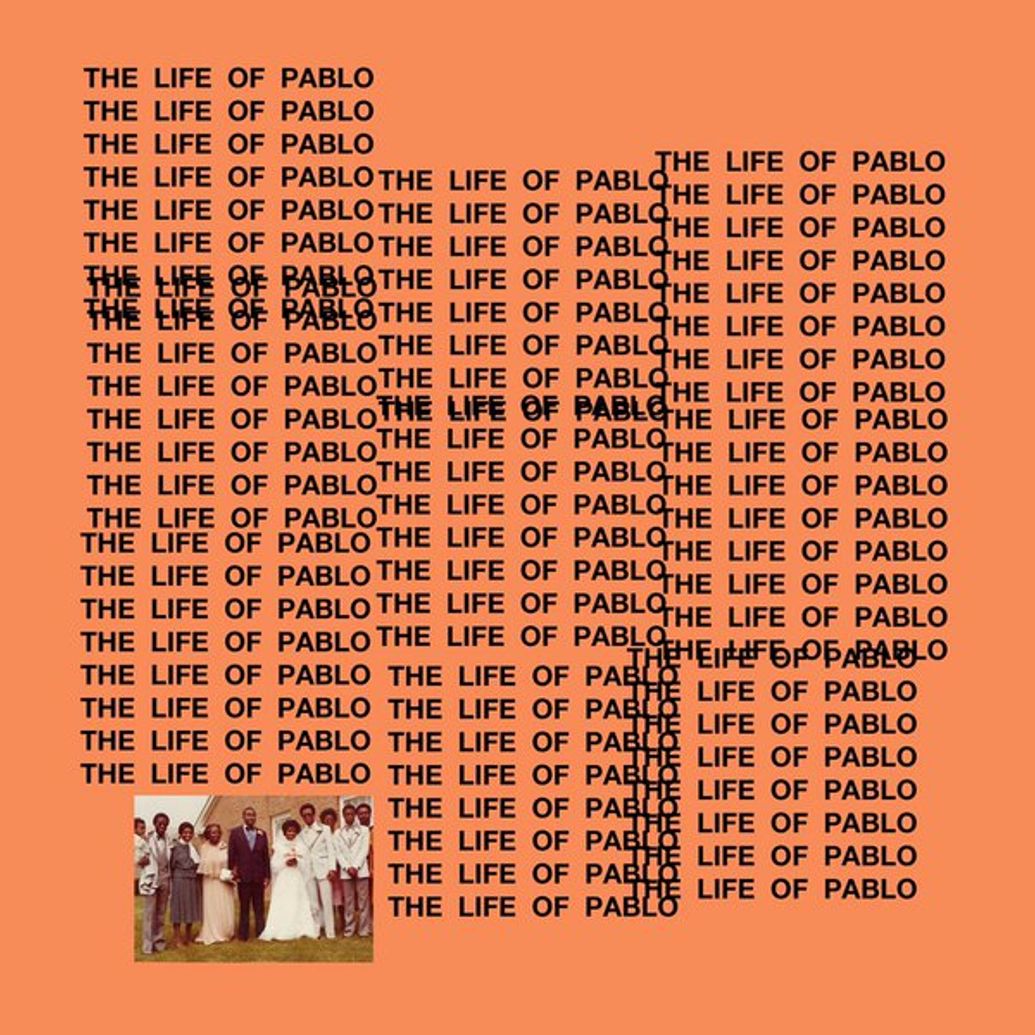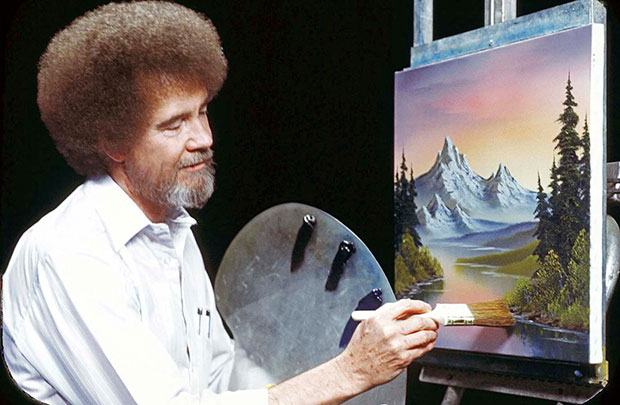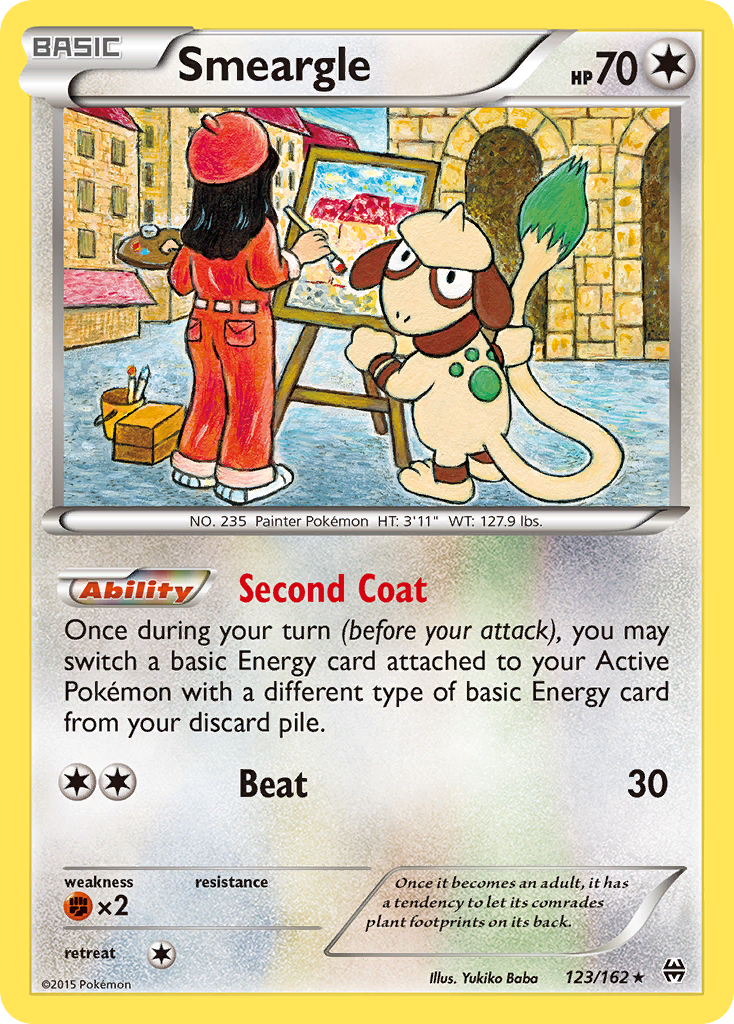The Art of the Pokemon TCG
Aloha 'Beach goers! Welcome! Hope all is well. Today I will be discussing the art of the Pokemon Trading Card Game. And no, not the literal card artwork. Rather, I will be discussing the ways in which competing in the Pokemon Trading Card Game parallels to the life of an artist.
Though I don't make my living by selling works of art or applying for shows, I do have an art education. I have worked as a photojournalist for a number of years and also teach art. Art, in my eyes, is not the creation of objects, but a perspective. The foundations of art apply to all facets of life, which is why art education is so important. Businessmen, doctors, scientists, athletes, writers and mathematicians all benefit by having an artistic perspective. Thinking imaginatively and creatively allows people to do amazing things that haven't been done before. In the same way, Pokemon Trading Card players benefit by looking at Pokemon in an artistic way.
Of course, the artistic parallels within the TCG run deepest in the field of deck building, but possessing an artistic worldview can also help you test and decide what to play at a given tournament. In this article I will dive deep into the art of deck building before ending with an original Yveltal-EX list for State Championships.
I was inspired to write this article because of conversations that I had with my friends on the long car ride to and from the St. Louis Regional Championship (where I was able to lock up my 2016 Worlds invite with a Top-32 finish -- turn up!). I drove a grueling eight hours each way, but the time seemed to fly with the steady and thoughtful conversations we held along the way. While talking in the car, we came to the realization that few people actually build and play their own lists on a regular basis. Consider that for a moment. It is surprising, but it also makes sense. Few TCG players make their own lists just like few tattoo artists draw their own tattoos. Many tattoo artists simply copy the artwork of more capable artists. Few doctors perform research, few athletes break records and few leaders make significant positive change in the world. For every field, there are a few significant people that define it and many people that follow the path laid before them by others. What kind of Pokemon trainer do you want to be?
I Feel Like Pablo When I'm Working on My Deck: The Art of Deck Building

Competitive lists within the Pokemon Trading Card Game are so public that there is little incentive to be your own deck builder anymore. That is, unless you truly believe that your lists are better than everyone else's. It doesn't matter if your lists are actually better than everyone else's or if you just think your lists are better than everyone else's; it takes a certain amount of arrogance to be an artist.
Art is, at its core, a self-important endeavor. The idea that the stuff I make is meaningful and worth looking at is a conceited thought. "I feel like Pablo" is a reference to Kanye West's new album, The Life of Pablo. Throughout the album he compares himself to Pablo, most likely Pablo Picasso. If there's anything we know about Kanye it's that he thinks himself to be a very significant artist, but the thing is, he's right. Kanye realizes that an artistic worldview is essential to his success as a musician and has been using it to produce relevant records for over a decade.
Kanye, like Picasso, understands that there is no point in releasing the same record twice. Kanye is seeking to reinvent himself and the meaning of rap with each album he produces. Kanye has claimed, "I am not a rapper," just like Picasso claimed, "I am not a cubist." These artists find labels frustrating, just like I would be frustrated by the claim, "Mahone is a Night March player," or "Mahone is a Landorus-EX / Crobat player."
In Pokemon, I am not defined by the decks I have been successful with, but rather, the decks I play are a reflection of my vision as a deck builder and card player. Picasso understood that his relevance leaned entirely on his perspective as an artist. In order to be a great deck builder in Pokemon you must have confidence and perspective. You have to be a little like Kanye and Pablo. You have to believe that your ideas have potential and have the willingness to execute them. You can't keep doing the same thing over and over again. You have to be a visionary.
"Inspiration exists, but it has to find you working." - Pablo Picasso

How often do you find yourself brainstorming about Pokemon? Do you find yourself thinking about Pokemon in your idle thoughts? Do you find yourself thinking about potential decks while at work or school? Sometimes archetypes seem to make themselves, like a Paint by Numbers. Some decks need to be forged and hammered much longer before they begin to take their ideal shape. When Picasso says, "Inspiration exists, but it has to find you working," he means that inspiration doesn't just fall from the sky, you have to work for it!
One of the most difficult things to do as an artist is to find inspiration, to find genuine ideas worth executing that are relevant to the art world. In art, you can't just wait for ideas to come to you, you have to actively pursue them. You have to spend time in the studio sketching and trying different things. You have to visit museums and shows and engage in works created by other artists.
In Pokemon, it is paramount to spend time with your cards, reading them and figuring out what they do; just like an artists spends time with their medium, playing with it, seeing how it interacts with various modes of application. Sometimes this means physically sitting in front of a box of cards, looking through them one by one. Sometimes it means visiting PokeBeach and reading the latest translations from an upcoming set. And, of course, you're already utilizing one of the most effective ways to research cards right now, reading articles online! Reading articles is one of the best ways to get a grasp of the metagame at large. Just like an artist needs to be aware of the art world and what other artists are creating in order to stay relevant, Pokemon players need to research and see what other players are playing in order to make relevant and educated decisions for building decks.
Digital Drafting
Another amazing resource for finding inspiration is Pokemon Trading Card Game online. I've mentioned this in articles before, but my appreciation of PTCGO only grows as I develop as a TCG player. PTCGO allows you to create and test new ideas at an astounding rate. It's no wonder that artists also use creative software to draft ideas quicker than ever before. If you haven't started utilizing PTCGO to create and test decks, I recommend starting a digital collection immediately. Despite its occasional technical faults, it is one of the finest resources available to us for deck building, testing and metagame discovery. By spending time online, you can see the kinds of decks that people tend to favor at a given point in time as well as see how decks operate without wasting time with physical cards.
Before Worlds last year, I used PTCGO in combination with real-life testing to test 100 starting hands with Blastoise to see if the deck was legitimate. Archie's Blastoise was a rogue concept before PokeBeach writer Steve Guthrie finished in the Top 16 with it at United States Nationals. Thanks to PTCGO, I was able to come to the quick conclusion that Blastoise is able to net a turn one Archie's play roughly 80% of the time with a large sample size, consistent enough to be a top Worlds contending deck.
In preparation for States, PTCGO could be used as a tool to refine an ideal Trevenant BREAK list. By using the 'test deck' option on PTCGO, you could run your list countless times to see how often it obtains a turn one Trevenant. Since the 'test deck' option pairs you against a computer opponent, you can scoop after the first turn of the game, try a new hand or make small adjustments and then continue testing. The 'test deck' feature is one of my favorite aspects of PTCGO. I often use it to see if my deck flows the way I intend it to before testing against real opponents.
Another, less successful, idea that I used the 'test deck' feature for during City Championships was an Archie's Primal Kyogre-EX deck. The concept of the deck was to get a turn one or two Tidal Storm by bringing Primal Kyogre into play with Archie's Ace in the Hole. The idea was cool and even worked most of the time, but the problem was that the deck didn't have the sustainability to last an entire game! Perhaps now with Puzzle of Time and Manaphy-EX the sketch is worth revisiting. PTCGO is like an artist's sketchbook. It's a place where inspiration can be kept and refined until it is time to bring the idea to life with physical cards.
"We Don't Make Mistakes, We Have Happy Accidents." - Bob Ross
When an artist begins creating, they shouldn't be scared or intimidated by the blankness of the canvas. They shouldn't be overtly worried about messing up or making mistakes. They should be excited about the possibilities for creation that lie ahead. Cartoonist Scott Adams says, "Creativity is allowing yourself to make mistakes. Art is knowing which ones to keep." TV Painter Bob Ross echoes this sentiment by saying, "We don't make mistakes, we have happy accidents."
The unintentional is a primary system of creativity within the art world. Artists have to dive into their projects boldly. Sometimes they have a plan at the start, but a plan that is too rigid will get in the way of serendipitous moments of discovery. Artists have to be open to new ideas as they arise. They need to be flexible and willing to scrap old ideas for new ones on a whim. They need to be open enough to pursue new routes of creation even if they haven't been explored before.

In Pokemon, we need to embrace the creative potential of serendipity as well. Not all of the best deck ideas are planned out in advance. Learning how to tame spontaneous ideas into relevant decks is an effective skill to have as a deck builder. We can't pretend that we have a flawless knowledge of what's good and what's bad in Pokemon Trading Cards, though many of us, myself included, like to. Pokemon is a game that is constantly changing, constantly rotating and in constant need of exploration.
I find myself firing off potential deck ideas all the time, especially on long car rides. Most of the time they get shot down and my friends tell me that I'm bad and need to shut up. In fact, I have probably only come up with one or two good deck ideas in the car. But the way I think of it, if I spit out 100 ideas and end up with two winners, it's still two more winners than I would have had if I wasn't brainstorming at all!
Just a month ago, I was astonished to see that Daniel Altavilla was able to win a Regional with an Yveltal-EX deck that played only three Hypnotoxic Laser. Prior to that, I would have never suggested that anyone try playing a Dark deck with only three Lasers in it. However, his list proved that the cut wasn't detrimental. If we don't allow ourselves to challenge the norms on card counts, decks will never change and archetypes will never evolve. As deck builders, we need to allow ourselves to put spontaneous ideas into action. Theorymon can only get us so far. Many ideas seems silly on paper, but work amazing in practice.
A few years ago, Henry Prior was able to finish second at a Regional with a Darkrai-EX / Ho-Oh-EX deck. Ho-Oh was used to accelerate Energy back onto his board so that he could use Energy Switch to power up his attackers. This idea was revived a couple years later in Travis Nunlist's "Spookysect" Virizion-EX / Genesect-EX list, which used the same concept to power up Virizion and Genesect. The idea of using Ho-Oh as an accelerator in non-Ho-Oh decks was a radical one, but ended up with some high placements at the Regional level.
I mention this because these rogue ideas were successful while I was learning how to play. I was so impressed by the simple and effective innovation in these lists that years later, they still stand out in my mind as creative triumphs. As deck builders, we need to open our minds to new possibilities. Often times the best deck builders are the ones that give off-the-wall ideas a chance before anyone else does.
This concludes the public portion of this article.
If you'd like to continue reading, consider purchasing a PokeBeach premium membership! If you're not completely satisfied with your membership, you can request a full refund within 30 days.
Each week we post high-quality content from some of the game's top players. Our article program isn't a corporate operation, advertising front, or for-profit business. We set our prices so that we can pay the game's top players to write the best content for our subscribers. Each article topic is carefully selected, goes through multiple drafts, and is touched up by our editors. We take great pride in our program!


